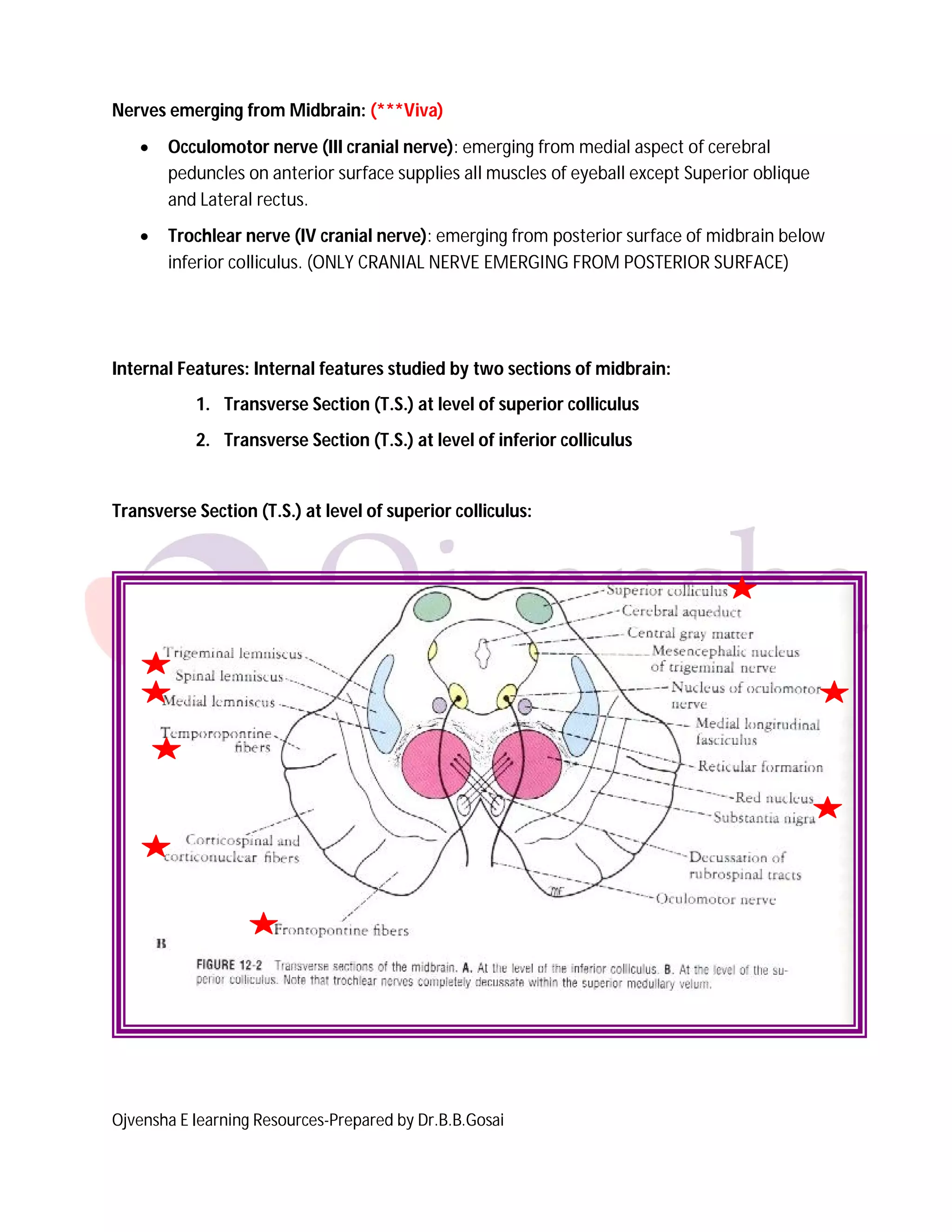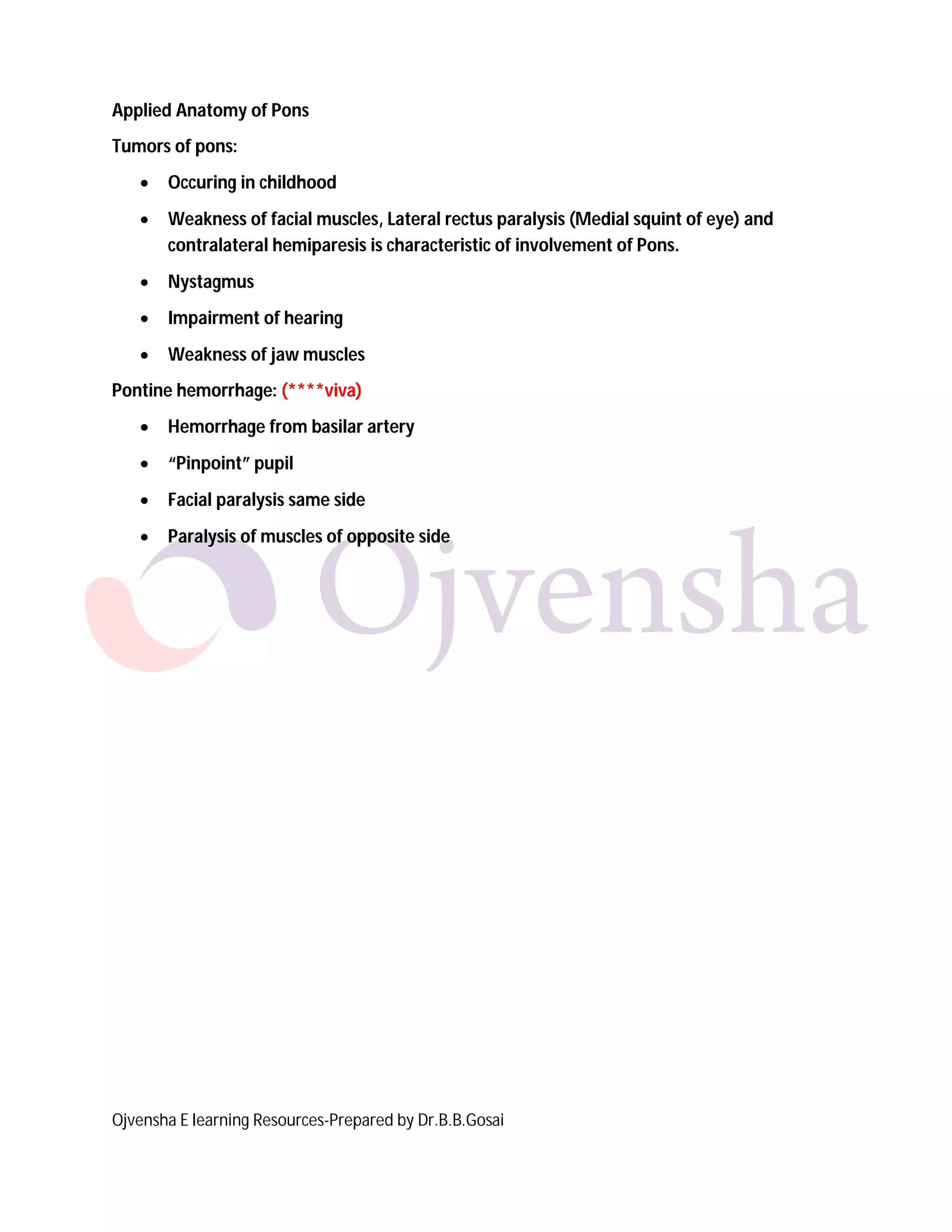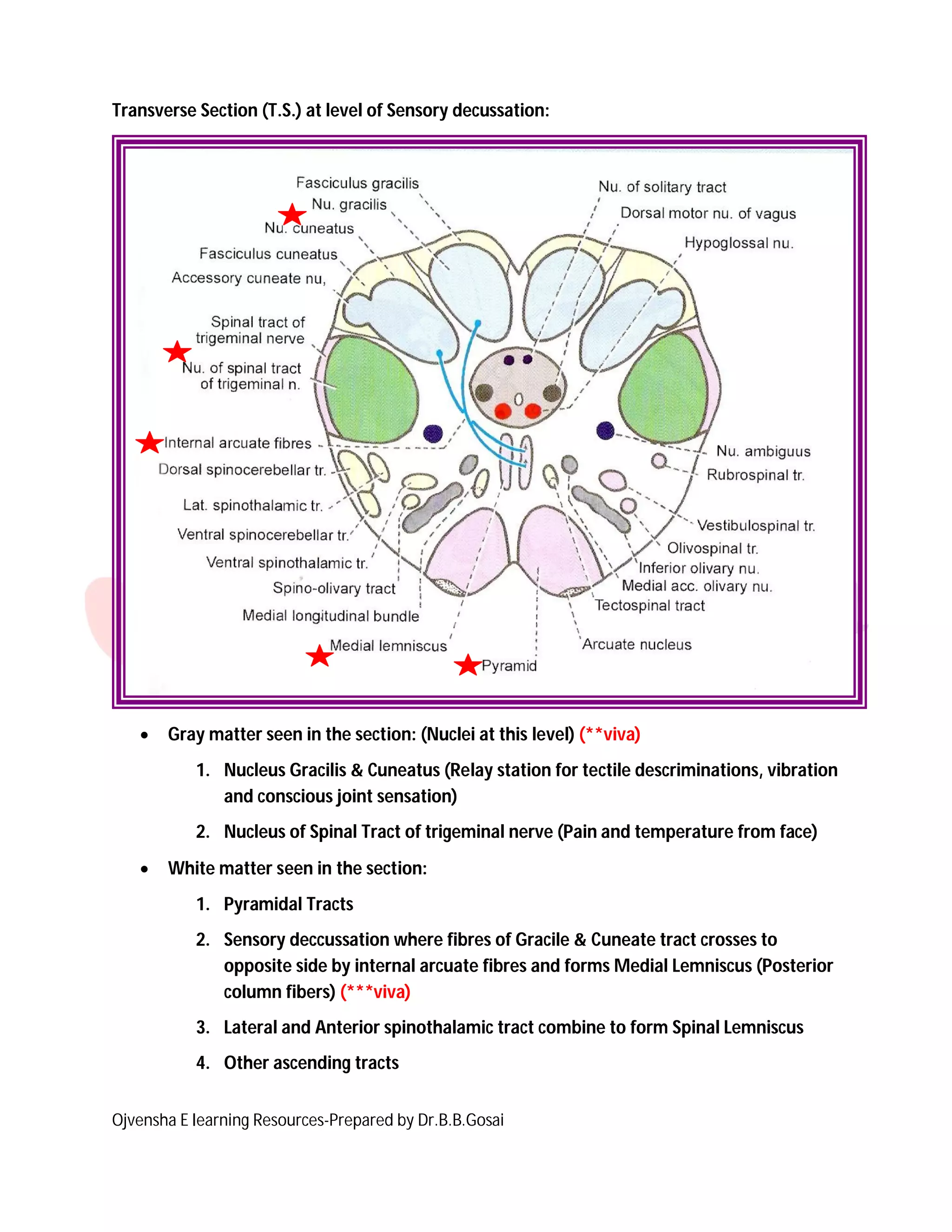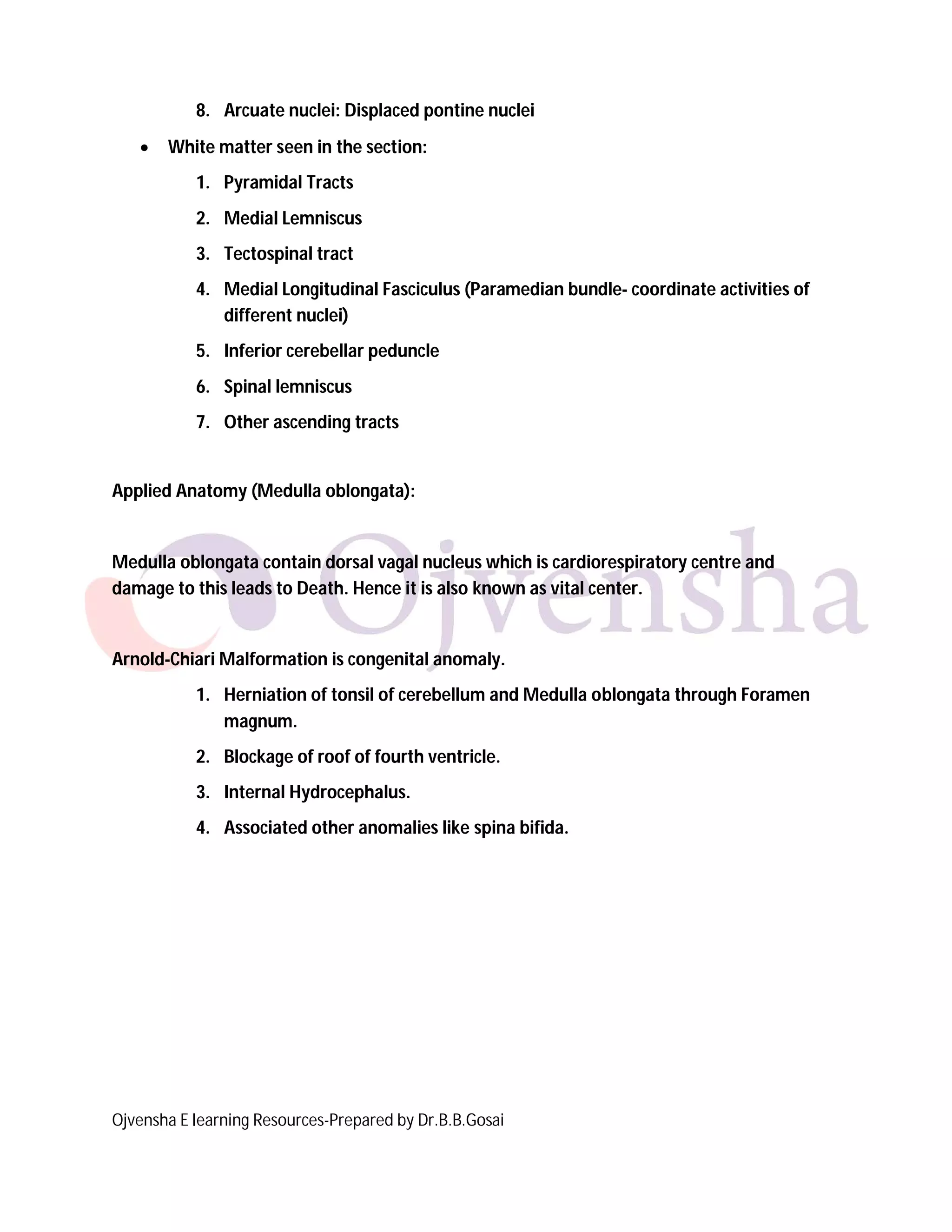The brainstem connects the spinal cord to the forebrain and consists of the midbrain, pons, and medulla oblongata stacked vertically. The midbrain contains nuclei that control eye movement and hearing. The pons contains nuclei that control facial muscles and hearing. The medulla oblongata contains cardiorespiratory centers and nuclei that control swallowing and tongue movement. Cranial nerves emerge from each region to innervate various structures. The brainstem plays a vital role in motor and sensory functions.



















